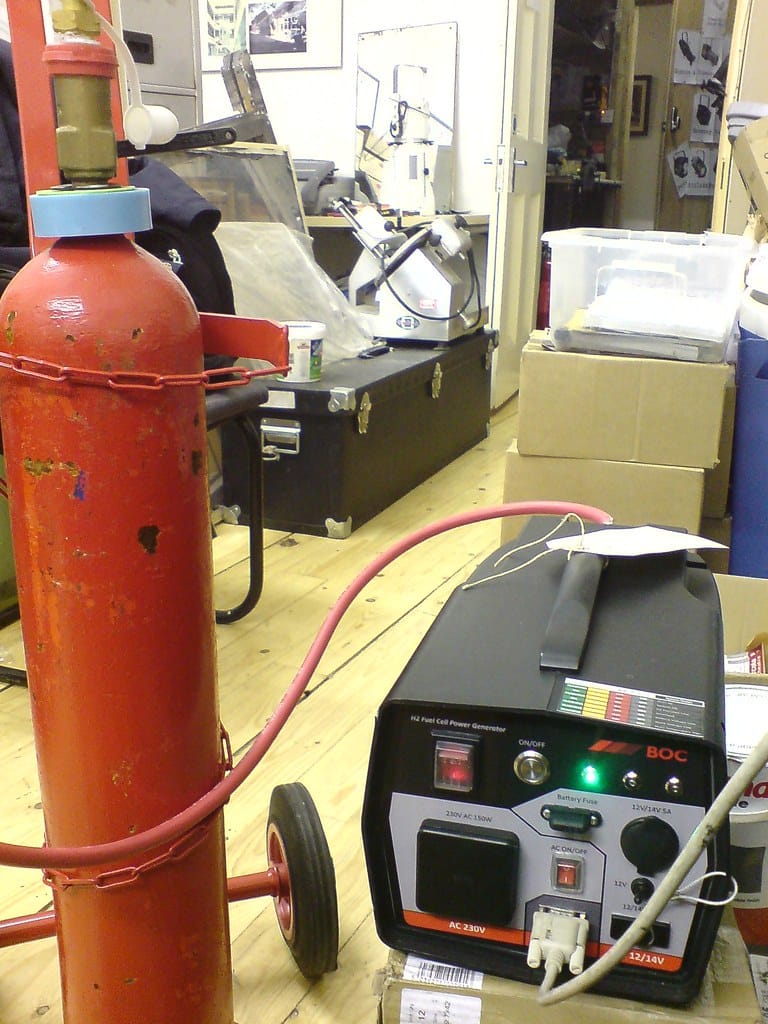Stellantis Pulls the Plug on Hydrogen: A Major Blow to Fuel Cell Dreams
The automotive giant's decision to abandon hydrogen fuel cell development signals a critical turning point in the race for zero-emission vehicles, potentially reshaping the entire clean transportation landscape.
Stellantis, the world's fourth-largest automaker and parent company of brands including Jeep, Ram, Peugeot, and Fiat, has officially abandoned its hydrogen fuel cell vehicle development program. This dramatic strategic shift represents one of the most significant corporate retreats from hydrogen technology in recent years, sending shockwaves through an industry already grappling with the complexities of electrification.
The decision, announced during the company's latest investor briefing, marks a stark reversal from Stellantis' previous commitments to hydrogen as a complementary technology to battery electric vehicles. As recently as 2022, the company had showcased hydrogen prototypes and spoke optimistically about fuel cell applications in commercial vehicles.
The Economics Behind the Exit
Stellantis' withdrawal from hydrogen development stems primarily from economic realities that have plagued the technology for decades. Despite significant investments and government incentives, hydrogen fuel cells remain prohibitively expensive compared to battery electric alternatives.
Current hydrogen fuel cell systems cost approximately $400-500 per kilowatt of power, while battery electric vehicle systems have dropped to around $100-150 per kilowatt. This cost disparity, combined with the lack of refueling infrastructure, has created an insurmountable barrier for mass-market adoption.
"The numbers simply don't add up," explained automotive analyst Maria Rodriguez from TechVision Research. "While hydrogen has theoretical advantages in range and refueling time, the total cost of ownership for consumers remains two to three times higher than comparable battery electric vehicles."
Infrastructure Challenges Persist
The hydrogen ecosystem faces a chicken-and-egg problem that Stellantis' exit will only exacerbate. Currently, there are fewer than 500 hydrogen refueling stations worldwide, compared to over 2.7 million electric vehicle charging points. Building a comprehensive hydrogen network would require hundreds of billions in infrastructure investment.
Germany, despite being Europe's hydrogen champion, has only 91 operational hydrogen stations. The United States fares even worse, with just 59 stations, mostly concentrated in California. This sparse infrastructure makes hydrogen vehicles impractical for most consumers, regardless of their technical merits.
Impact on the Hydrogen Industry
Stellantis' decision represents more than just one company's strategic pivot—it signals a broader industry consolidation around battery electric technology. The move follows similar retreats by other major players, including Mercedes-Benz, which scaled back its hydrogen passenger car program in 2023.
However, the hydrogen industry isn't entirely dead. Toyota remains committed to fuel cell technology, recently announcing plans to expand its hydrogen vehicle lineup. Hyundai continues development of its NEXO fuel cell SUV and has ambitious plans for hydrogen commercial vehicles.
The commercial vehicle sector, particularly heavy-duty trucking, may still offer hydrogen a viable path forward. Companies like Nikola and Hyzon Motors are betting that hydrogen's quick refueling capabilities and extended range will prove advantageous for long-haul applications where battery weight becomes prohibitive.
What This Means for Consumers
For consumers, Stellantis' exit from hydrogen development effectively narrows the zero-emission vehicle landscape to battery electric and plug-in hybrid options. This consolidation may accelerate battery technology improvements and reduce costs as manufacturers focus their R&D resources on a single primary technology.
The decision also reinforces the importance of government policy in shaping automotive technology adoption. Countries like China and Norway, which have implemented strong electric vehicle incentives, are seeing rapid EV adoption. Meanwhile, hydrogen-focused policies in Japan and South Korea have yielded limited consumer uptake.
The Road Ahead
Stellantis' hydrogen exit represents a pragmatic business decision that prioritizes near-term profitability over long-term technological possibilities. The company will redirect its resources toward battery electric vehicle development, joining the industry consensus that has emerged around lithium-ion technology.
This consolidation may ultimately benefit consumers through faster innovation cycles and economies of scale in battery production. However, it also raises questions about technological diversity and the wisdom of putting all eggs in the battery electric basket.
As the automotive industry continues its historic transformation, Stellantis' decision serves as a reminder that in the race toward zero emissions, market forces—not just environmental concerns—will ultimately determine the winners and losers. For now, hydrogen's automotive dreams remain on hold, while the electric revolution accelerates into high gear.
